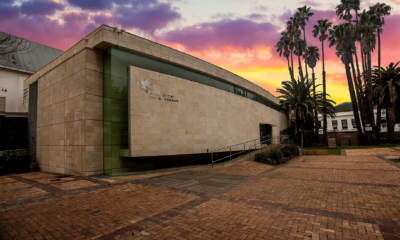
Israel
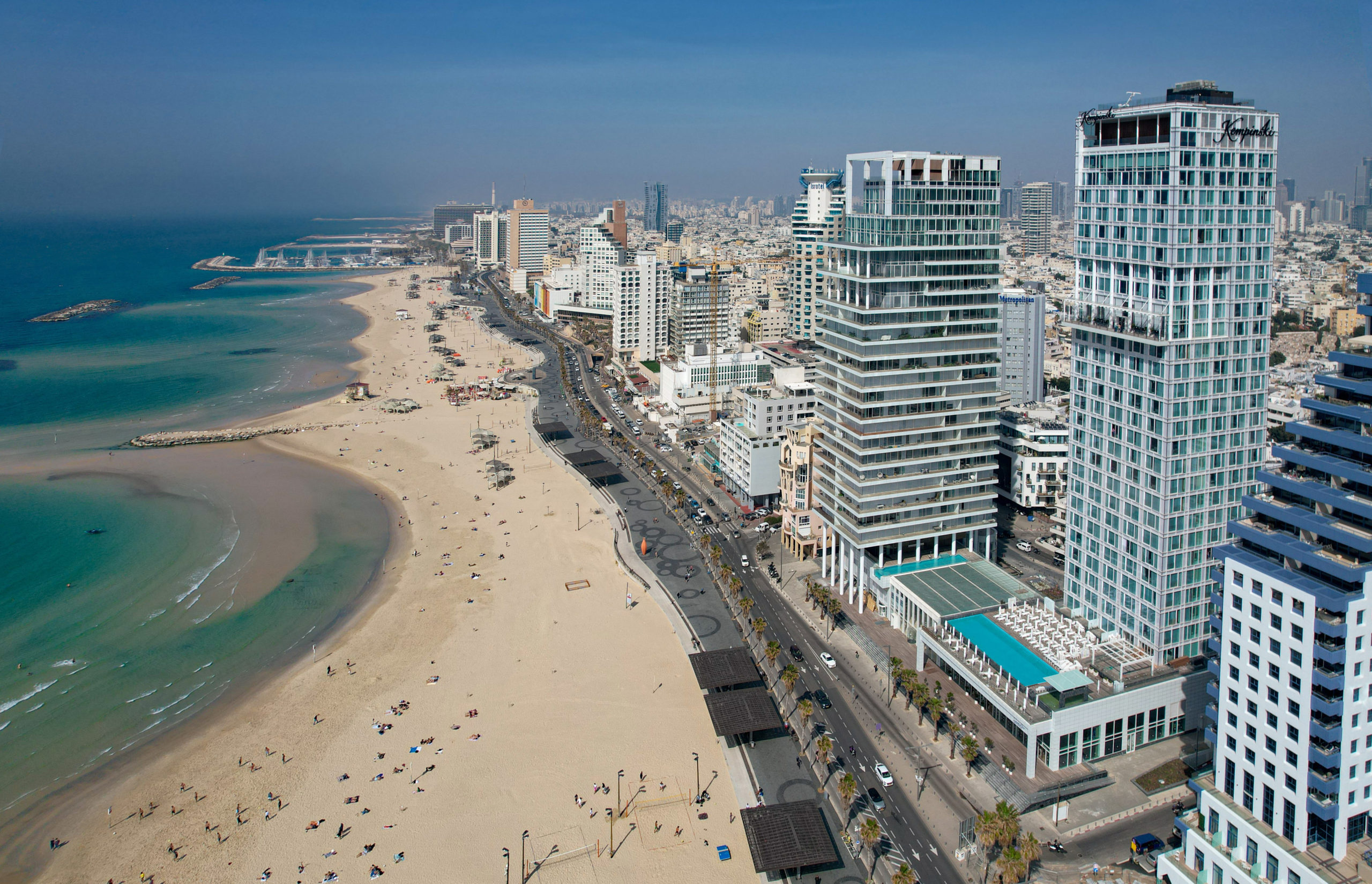
Tel Aviv, a city with a culinary twist, or 70
“Tel Aviv! It’s a balagan!” the taxi driver snorts as we inch snail-like into the city from the airport. It’s baking, and Tel Aviv’s most popular new transport, the razor scooter (look left, look right and proceed with caution always) whizzes past us.
It’s a beach day. In summer, every day is a beach day, and people are dressed in as little casual clothing as possible.
The road is jammed, giving time to take in the profusion of construction-boom cranes and endless pavement cordons. Taxi drivers scoff at the city’s plan to build a light rail service that dates back eight years. Tel Aviv needs it.
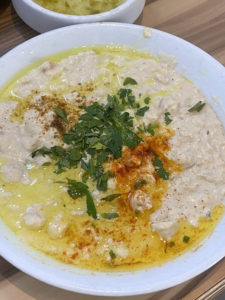
Modern Tel Aviv is a “nonstop city”, with glamorous restaurants, cocktail bars and nightclubs, young and brash tech magnates, a 24/7 lifestyle, soaring skyscraper hotels, and fancy apartment blocks. It’s easy to be swept up by progress, but Tel Aviv’s essence and charm is in not losing sight of its past – its distinctive Bauhaus architecture and the charming White City of low-rise modern buildings. In 2003, they were recognised by the World Heritage List of Unesco (United Nations Education, Scientific and Culture Organisation) with more than 1 500 buildings marked for preservation.
To find Tel Aviv, you must walk its streets, get a little lost in the messy geography, stop for sustenance frequently, and you’ll soon discover you’re in one of the world’s richest culinary cities.
Find your way into the tranquil elegance of Bialik Street’s galleries, and take a self-guided tour of Bauhaus architecture. Head to gritty bohemian Florentine and into the quiet beauty of Neve Tsedek’s small cobbled streets. At the Tel Aviv Museum of Art, we found half a day wasn’t enough to give attention to the incredible historic and contemporary collections. Picasso and Monet sit side by side with powerful exhibitions on the pitfalls of Israeli urban planning and a video display raising troubling ethical questions of modern statehood.
Walk the American German colony, one of the city’s oldest suburbs, and wind your way into Jaffa, the historic port city, its architecture so reminiscent of Jerusalem’s Old City. Sadly, Jaffa’s status isn’t as sacred or protected, and its architecture is under threat, while its historic mix of traders and cultures is slowly being homogenised.
In Jaffa, I tasted knafeh for the first time, at Yaffa Knafeh. Said to be the most representative Palestinian dessert, it’s a crunchy pastry-encased salty cheese, warmed on the grill, drenched in syrup, with chopped pistachios and a dollop of ice cream. It’s a revelation, and was the first of many more on this short trip.
You cannot tick Tel Aviv off your list without spending time in the Carmel market with its colourful and loud traders, abundant fruit, spices, herbs and other food treasures.
To get to the true heart of Tel Aviv, you must travel the city through your tastebuds. Falafel, shawarma, sabich, hummus, knafeh, chraime, burekas, shakshouka, malabi. Even the words alone are enough to make you hungry.
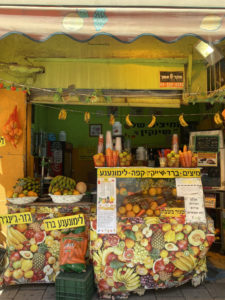
And in that small menu is a trip to food cultures and traditions from across the globe. Yes, Tel Aviv is proudly Israeli, but it’s also Libyan, Turkish, Palestinian, Syrian, North African, Georgian, Yemeni and more.
Roger Sherman, who directed the 2016 documentary film In Search of Israeli Cuisine, says , “I was knocked out by what I discovered … one of the most dynamic food scenes in the world.” He put the number of cultures that influence cooking in Israel at about 70, a phenomenon that has developed in modern Israel in just more than 70 years.
At the David Kempinski Hotel where we stayed for the first three days of our trip, the kosher breakfast buffet alone was so good and so unbelievably extensive it should be declared a national monument to the tastes of Israel. Roasted whole salmon, tuna in every variation, pickled herring, smoked mackerel and of course hummus, fresh salads, roast tomatoes, tabbouleh, eggplant with labane, immense platters of grilled vegetables, cheeses drenched in honey and topped with walnuts, Israeli salad, quinoa. A heaving display of delicious pastries and breads, a halva extravaganza, and fresh honey from a honeycomb, represent just a fraction of what was on that table.
It’s no wonder that it’s only open to guests – if word got out, the queues into the hotel might rival the traffic on HaYarkon Street outside the door.
The hotel opened in April 2022, a multi-story glass tower between Trumpeldor and Jerusalem beaches, its outdoor breakfast area and upstairs poolside affording a perfect view of the fine sandy beach across the road, full of activity night and day. Kempinski is Europe’s oldest luxury hotel brand, 125 years old, and this its 80th property. A large resort-type hotel, it’s unusually intimate for its scale, the result of fine touches such as exquisite fresh flower displays and a hand-picked selection of cookbooks across the hotel. It’s an extraordinary place to stay – with immaculate service.
From modern Tel Aviv, we moved to The Drisco in the American-German Colony. The 36-room boutique hotel dates back to 1866, built during the Ottoman Empire by American brothers George and John Drisco. They soon ran out of money (they might have faced the same fate in 2022 – Israel is a pricey destination) and sold the property to an hotelier who completed the building in 1870. From housing notable guests such as Thomas Cook and Mark Twain, The Drisco’s fortunes fell – it closed in 1940, served as a military headquarters in World War II, and then housed Jewish refugees, before being abandoned in the 1970s.
Its reconstruction and restoration began in 2006, and was completed more than 10 years later, revealing its elegant structure and restoring historic features that include original wall murals, wrought-iron details and an ornate facade.
Head upstairs to the rooftop of this charming hotel for a drink at sunset to admire the quiet beauty of the neighbourhood. Downstairs, book a table at George & John – number nine on the Middle East and North Africa World’s Top 50 best restaurants – where chef Tomer Tal is known for his pairing of modern Israeli dishes with Mediterranean influences. His cooking style focuses on seasonality and sustainability, and he ascribes his influences to proximity to the beach, growing up on a farm and nearby Jaffa.
We tasted a sublime dish of tuna toro and roasted cherries; a richly satisfying crab pasta in sweet corn cream, with sage and brown butter.
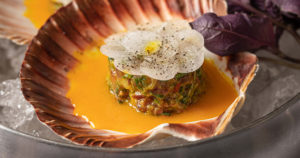
Of course with so many influences at play, one should venture in many directions. At the buzzing and casually glamorous Hotel Montefiore’s restaurant, the dishes are Vietnamese-inspired French cuisine. At Taizu, in an unlikely business-district setting, chef Yuval Ben Neriah serves up Asian street food with a Mediterranean twist.
A city with a twist is a good way to describe Tel Aviv. At a glance, it’s a proud cosmopolitan city, rushing headlong into its future like a razor scooter. But take a breath, and slow down, walk its streets and explore, and much like our discovery of knafeh on a walkthrough tour of Jaffa, you’ll be rewarded with a complex and layered experience that’s all the sweeter.
Laurice Taitz-Buntman is an urbanist, and the editor of the Johannesburg in Your Pocket City Guide. She’s most alive when she’s walking through a city. This was her fifth trip to Israel. She was an invited guest of the David Kempinski and Drisco Hotels in Tel Aviv.









